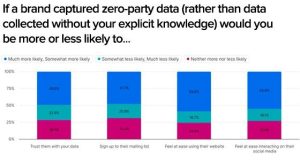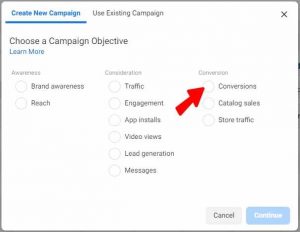
I gave a speech recently and somebody asked a very common question — “I like to tweet with my friends but I also tweet for my company. Do I need to have two Twitter accounts?”
A great question. What is the proper balance between personal and professional outreach on Twitter? If you are using an account to promote company and client content, is it also appropriate to carry on conversations on a personal level about sports, a great recipe or your favorite charity? Do you need to have TWO ACCOUNTS?
I have to address this question on two levels, philosophical and practical.
Twitter and the power to network
There are so many different uses for Twitter but when it comes to business, I think at its heart, Twitter is a powerful networking tool … which is what many companies and individuals don’t understand. They view the platform as just another way to broadcast company advertising and press releases. By trying to force-fit old “broadcast” media thinking into this new platform they are sub-optimizing Twitter at best and hurting their brand at worst.
Think of yourself in another networking situation … say an industry conference or a chamber of commerce meeting. Would you stand there and read press releases? No, of course not. You would seek out great people to connect with, discuss subjects that are interesting to them, and eventually look for ways to work together. Twitter can work exactly the same way.
So even if you are playing a business “role” on Twitter, there is no reason you can’t be yourself, unless you are a naturally mean and sucky person. If you are in that category, you either have to not be mean and sucky or not use Twitter. And if you are truly, chronically mean and sucky, you probably will fail at business any way, let alone Twitter, so it’s better that you find out sooner than later I suppose.
Building trust through Twitter
When networking, the most powerful relationships are built on trust and friendship, so it’s OK to let people know a little bit more about what is going on in your life, including your love of sports, charity, and family. As you go throughout your day, just tweet what is interesting to you, as long it is appropriate and professional.
In most cases, I do not think it makes sense to have both a personal and business account. You’re not two people and being yourself is not only a great way to build your business network, it humanizes your company brand.
OK, now I’ll get off my soapbox and examine some practical realities. Even if you have this concept down, maybe your company doesn’t. If your job is to be your official company Twitterer, you probably have marching orders to follow a role or social media policy that has you tweeting behind a logo. You might even have a (gasp) script. Here’s what you should do in that case: follow the company policy. Don’t lose your job over Twitter. You can still work to change attitudes over time. Buy your boss a copy of The Tao of Twitter. We’ll both thank you.
The five types of Twitter accounts
There are several compromises or hybrid strategies to blending personal and professional approaches on Twitter. Here are the five types of organizational Twitter accounts. Which one fits for you?
1) All business all the time. In some cases it is entirely appropriate to “broadcast” over Twitter. Here’s an example: Citi has a site (@CitiJobTweets) that only broadcasts job openings. They really don’t need to engage in a conversation and they’re not even trying. The account follows nobody. They have jobs, people want them … and they subscribe to the account. It’s that simple. They could probably work to build a community, but why? This is simply a broadcast channel.
2) Tweeting under cover – Many of the world’s most important brands have teams of tweeters engaging with the public behind a corporate logo.
A common practice is to tweet with the initials of the tweeter at the end of each tweet and some place to actually learn about who is actually behind the tweets – a link on the Twitter profile page, or a list of names and initials on the Twitter background are common places. I like this best practice because it allows real human connection even in a big corporate environment. A tweet might look like this: Glad to help you @username. Thank you for using our product! – MWS
This is a low-effort, low-risk option to humanize the brand and still operate under one brand banner that is commonplace today.
3) Blending personal/corporate — In some cases there are corporate accounts assigned to individuals, especially in customer service roles.
So for example, you might have an account called @ATTSusan or @CiscoJeff (I made those up). This account would feature a real person and a real photo but the account is owned by the company. When that person moves on, the profile would change to a new name and a new person in that role in the company.
4) Real persons in real time – Usually the best option is to have real people representing your company like my friend Chad Parizman (@cparizman), who works for HGTV. His profile states: #SocialTV for HGTV & DIY Network. Yankee Fan. Web Analytics Geek.

The ultimate goal for many companies is to get to a place where many employees can serve as beacons for your brand. Chad clearly identifies himself as an HGTV employee but is free to build his own connections through his own personality and content. Of course he also knows that in some respect, he is always “on” for HGTV.
5) Fake and Fun. A recent trend is creating entertaining Twitter accounts based on fake characters. Coke has created a hilarious account based on the quips from the company’s long-dead founder. A restaurant in Seattle has an account for its French Fries and in this case, Geico Insurance unleashes the company mascot, a gecko:

Top illustration courtesy Flickr CC and Rosaura Ochoa
(274)
Report Post






